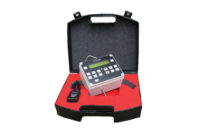Live-Bird Markets are Under the Microscope
By Simon Shane
As the United States battles new outbreaks of bird flu, the role and necessity of live- bird markets must be examined.
“We can’t jeopardize the entire U.S. [poultry] industry,” is the brief but incisive comment of Jim Sumner, president of the USA Poultry and Egg Export Council. This organization, representing integrators, operators of cold storage facilities, shippers, and agents, has been buffeted in a roller-coaster ride throughout 2003 and the current year as a result of trade embargoes following numerous outbreaks of low pathogenicity avian in
Long ignored by the commercial poultry industry, LBMs and their supply flocks emerged as a significant reservoir of avian influenza during the 1983/84 outbreak in Pennsylvania. Since this time, intensive surveillance has continuously demonstrated infection in LBMs, confirmed by recovering the virus from facilities and supply flocks in the Northeast and more recently, Texas.
The simple solution would be to close down markets and eliminate the trade in birds. Martin Smeltzer, regional epidemiologist with USDA’s Animal and Plant Health Inspection Service, says more than 20 million birds of various species pass through as many as 150 known storefront slaughter facilities in the Northeast metropolitan areas each year. Charles Beard, vice president of the US Poultry and Egg Association (USPEA), maintains that closing live-bird markets would drive the entire process underground, rendering it absolutely impossible to regulate and monitor, creating a bigger problem than the current situation.
An LPAI strain of H7N2 that emerged in the early 1990s has become the predominant isolate circulating in flocks supplying LBMs in the Northeast. In 2002, 4.7 million turkeys on 180 farms in Virginia’s Shenandoah Valley were destroyed as a result of exposure to this LPAI strain of H7N2.
Following the 2002 Virginia outbreak, which cost more than $150 million to eradicate, the poultry industry and veterinary regulators recognized the need to establish policies to control LPAI. The three issues of concern are control and eradication of LPAI in the commercial industry, suppression of LPAI in the LBM supply flocks, and the possible use of vaccines as a control strategy.
Edward Zirkle, chairperson of the Live-Bird Market Sub-Committee of the U.S. Animal Health Association, relays that most of these recommendations can be implemented across 80 percent of the supply system. The real problem is “rogue dealers” who purchase birds indiscriminately from small farms, auctions, and conventional supply flocks, traveling extensively both within their home regions and across state borders to deliver birds to urban markets. Since the purchase and sale of live birds is a cash business, participants in the supply system are disinclined to keep accurate records that would be costly if subjected to IRS scrutiny. The extensive movement of birds outside the regulated system ensures the perpetuation of LPAI and other diseases, to the detriment of commercial flocks and the export market.
Identification and Regulation Issues
Individual identification of birds entering the supply chain for LBMs is an essential but highly controversial component of the control program. Zirkle was commissioned by USDA to investigate alternative methods to identify birds. Insertion of a small plastic tag in the skin of the neck shortly after hatch was regarded as a humane and effective solution, but the amount of data entered onto the tag was limited by size. A tag coated with an “invasive” adhesive was effective when applied to the plumage on the back of a marketable bird. This tag remained intact for a number of weeks, and could only be detached by removal of feathers.
In the short term, intensified regulation of the LBM system will be dictated by the immediate need to control AI. Surveillance for the disease, individual bird identification, and certification of movement across state lines, impose costs that are passed to consumers — hopefully reducing demand. Studies should be undertaken to determine the demographics of purchasers of live-birds and their motivation and willingness to pay high prices for chickens, game birds, and waterfowl. The objective would be to develop appropriate educational programs to convince consumers to purchase conventionally processed poultry based on equivalent taste, quality, and superior health attributes.
The LBM system can only survive with the acquiescence of local health authorities that license storefront slaughter plants. All of these units operate under the 20,000 bird-per-year exemption from FSIS regulations. By implementing the same standards of anti-mortem inspection, processing facilities, equipment, and pathogen control as the commercial industry, authorities could virtually eliminate LBMs.
Changing the Definition
The definition of HPAI and LPAI are currently under review by the Office International des Epizooties (OIE). If all H5 and H7 isolates, regardless of molecular characteristics and pathogenicity index are regarded as “highly pathogenic,” the control of these infections would be passed from individual states to the federal government. The suggested cooperative federal-state program to control LPAI in flocks caused by H5 and H7 strains associated with the LBM sector would then be under the purview of the USDA. Cost sharing for programs would be established between the USDA and participating states to activate personnel and resources required for control.
In the unlikely but possible occurrence of an outbreak on a multi-species production farm with infected hogs, a new influenza strain, pathogenic to humans might evolve. Emergence of H5N1 capable of infecting contacts in Hong Kong in 1997 and subsequent cases of H5N1 human influenza in Vietnam and Thailand during the 2003/2004 epidemic resulted in a sharp reduction in consumption through live-bird markets in these countries.
Opposition to the live-bird system is growing, says David Kradel, a retired extension veterinarian affiliated with the Pennsylvania Department of Agriculture. “The situation in Delaware is only going to fan the flames of what they’ve been talking about now for a couple of years,” he says. “There are those in the United States who are absolutely determined that we have to eliminate the live-bird markets.”
The USDA has allocated $13 million during the new fiscal year for activities to control the live-bird market system including tracking, surveillance and identification of birds. This allocation may be too little and too late.
Dr. Simon M. Shane is an Emeritus Professor of the Department of Epidemiology and Community Health, School of Veterinary Medicine, Louisiana State University. Shane serves as an Adjunct Professor in the Department of Poultry Science, North Carolina State University.


Report Abusive Comment